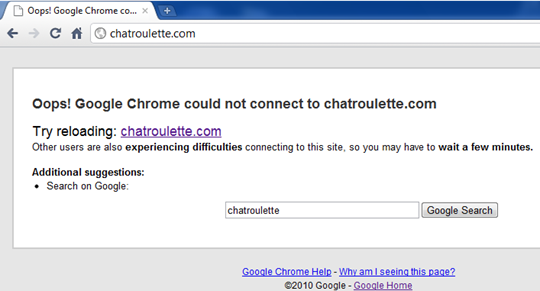When a website does not open, web browsers throw a general “website not found” or “server not responding” message. Such messages are vague and does not tell you whether the web server is actually down or if the problem is elsewhere. Your ISP could be facing technical problems, or deliberately blocking the page, there might be a temporary traffic congestion or something wrong in your home connection.
A web service that has been offering immense help in troubleshooting such problems, and which is popular among the tech folks is Down For Everyone Or Just Me. You go there, enter the URL of the page that doesn’t open and see if others people around the world are having trouble accessing the site as well. But the latest version of Chrome appears to provide the same information, as discovered by blog Rudefox.
While trying to access a website, the blogger got the typical Chrome message “Oops! Google Chrome could not connect to site.com” and additionally it also mentioned that “Other users are also experiencing difficulties connecting to this site, so you may have to wait a few minutes.”.

It’s a known fact that Google collects anonymous surfing data from users of Chrome. With this latest Chrome feature, Google accidentally opened up a small crack in their data vault allowing us a quick view of the kind of data Google may be collecting from users, even though Matt Cutts denies Google snooping in on users.
If you’re just surfing around the web and clicking on links, that information does not go to google.com.
It’s a great thing to make the user aware that its not his connection that is the source of the problem but the web server, but it comes at a price.
[via TechCrunch]

The regular message of “website not found” is very irritating to the user. Mostly because of how vague and unhelpful this is by not informing you of whether the web server is actually down or if the problem is elsewhere.
ReplyDeleteTo have the option of a more informative site which can assist you on actually finding the fault is great. The simplicity of just having to type in your problem URL just adds to its favour. Next time I get the dreaded message I will definitely be checking out this site to see what everyone else around the world has to say.